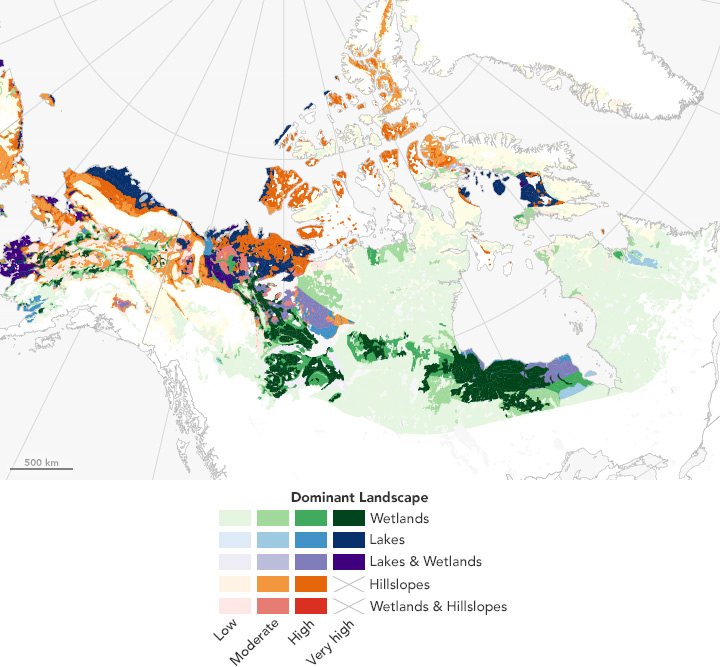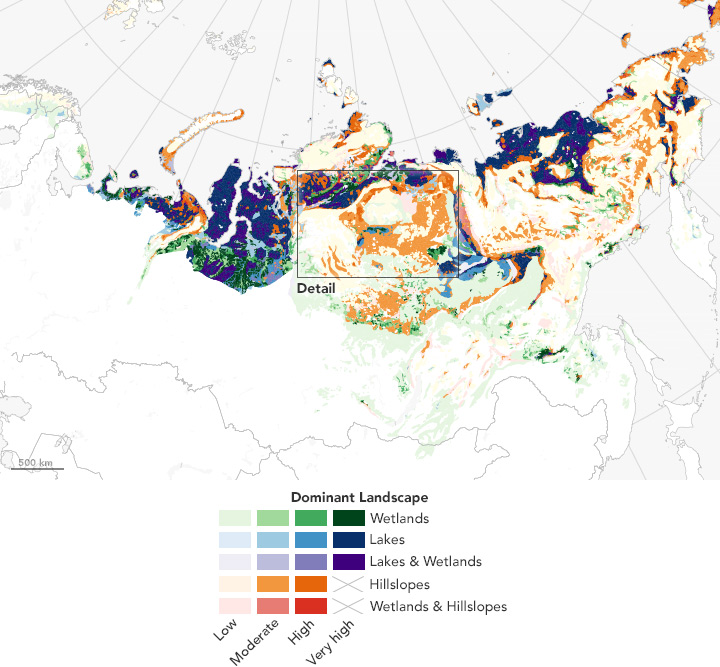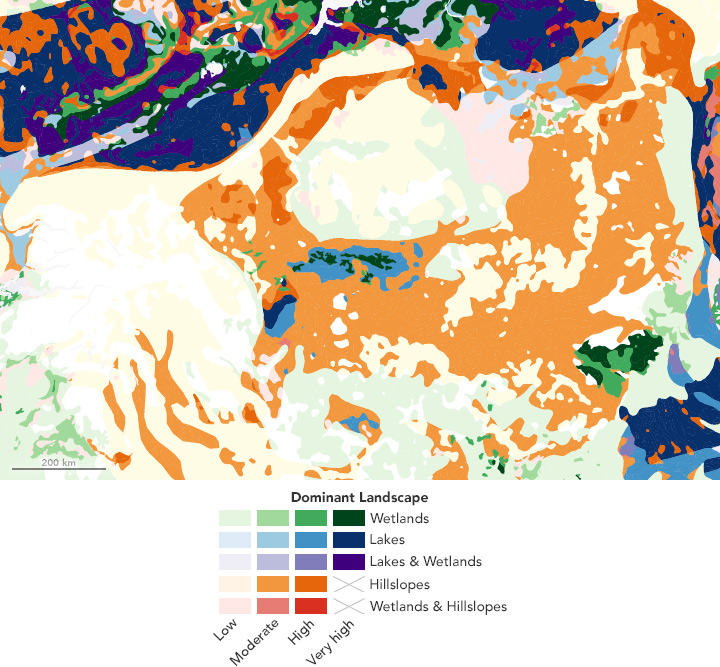


Like a giant ice cream cake left outside on a hot summer day, the Arctic is melting. In the land of frozen Earth, new wetlands are appearing, as are lake-sized puddles and kilometers-long rivulets of melt water. Scientists have long known about thermokarst—areas where permafrost has thawed and given way to land surface collapse and eroded gullies. But until now, they did not know just how much of the Arctic landscape was susceptible to thermokarst.
A holey, Swiss cheese-like landscape, thermokarst is distributed widely across the high latitudes of the northern hemisphere. According to new research, it makes up roughly 20 percent of the northern permafrost region. Thermokarst landscapes store as much as half of the region’s soil organic carbon (SOC)—a potentially significant source of future greenhouse gases. A study published in October 2016 in Nature Communications maps this Arctic thaw.
Unlike previous studies that focused on the small scale of thermokarst, this one spans thousands of kilometers around the Arctic, said David Olefeldt, lead author and a professor at the University of Alberta (Canada). To start to form a picture of where thermokarst has formed or is most likely to form, Olefeldt and colleagues merged maps of land topography, ground ice conditions, and biome types. The new maps pinpoint areas that are most likely to release more greenhouse gases as they thaw. These are also places where habitats will change and infrastructure issues—such as structurally damaged roads and bridges—might arise.

The maps above, which show the northernmost latitudes of North America and Eurasia, were created using data from the study. The map below offers a closer look at Siberia. The different colors reflect the types of landscapes—wetlands, lakes, hillslopes, etc.—where thermokarst is likely to be found today and where it is most likely to form in the future. The darker the color, the higher percentage of the landscape is covered by that landform. Coverage is classified as very high when 60 to 100 percent of the land fits into that category. High means 30 to 60 percent coverage; Moderate is 10 to 30 percent, and low is below 10 percent. Hillslope thermokarst landscapes do not reach very high levels, the researchers found.
In places where the permafrost has melted and become thermokarst, wetlands were the most prevalent landform, accounting for nearly 8 percent of the northern landscape. Lake thermokarst covered 7 percent and hillslope thermokarst was prevalent in 5 percent of the area. However, thermokarst landscapes sometimes overlapped, accounting for the marbled appearance of the maps.
While the three thermokarst landscapes have similar total areas, the paper notes, “their distributions differ with regards to both their spatial concentration and their relations to current climate conditions.” Wetland thermokarst has ‘very high’ coverage in boreal peatland regions like the West Siberian Lowlands and the Mackenzie River Valley. For lake thermokarst, ‘very high’ coverage areas include the Yukon Delta, the Alaska North Slope, and coastal regions along the Kara Sea, Laptev Sea, and East Siberian Sea. The map shows ‘moderate’ and ‘high’ regional coverage of hillslope thermokarst landscapes in tundra regions, including the Seward Peninsula and North Slope of Alaska, the Mackenzie River Valley, and the Canadian Arctic Archipelago.

NASA Earth Observatory maps created by Jesse Allen, using data provided by David Olefeldt, University of Alberta. Caption by Pola Lem.